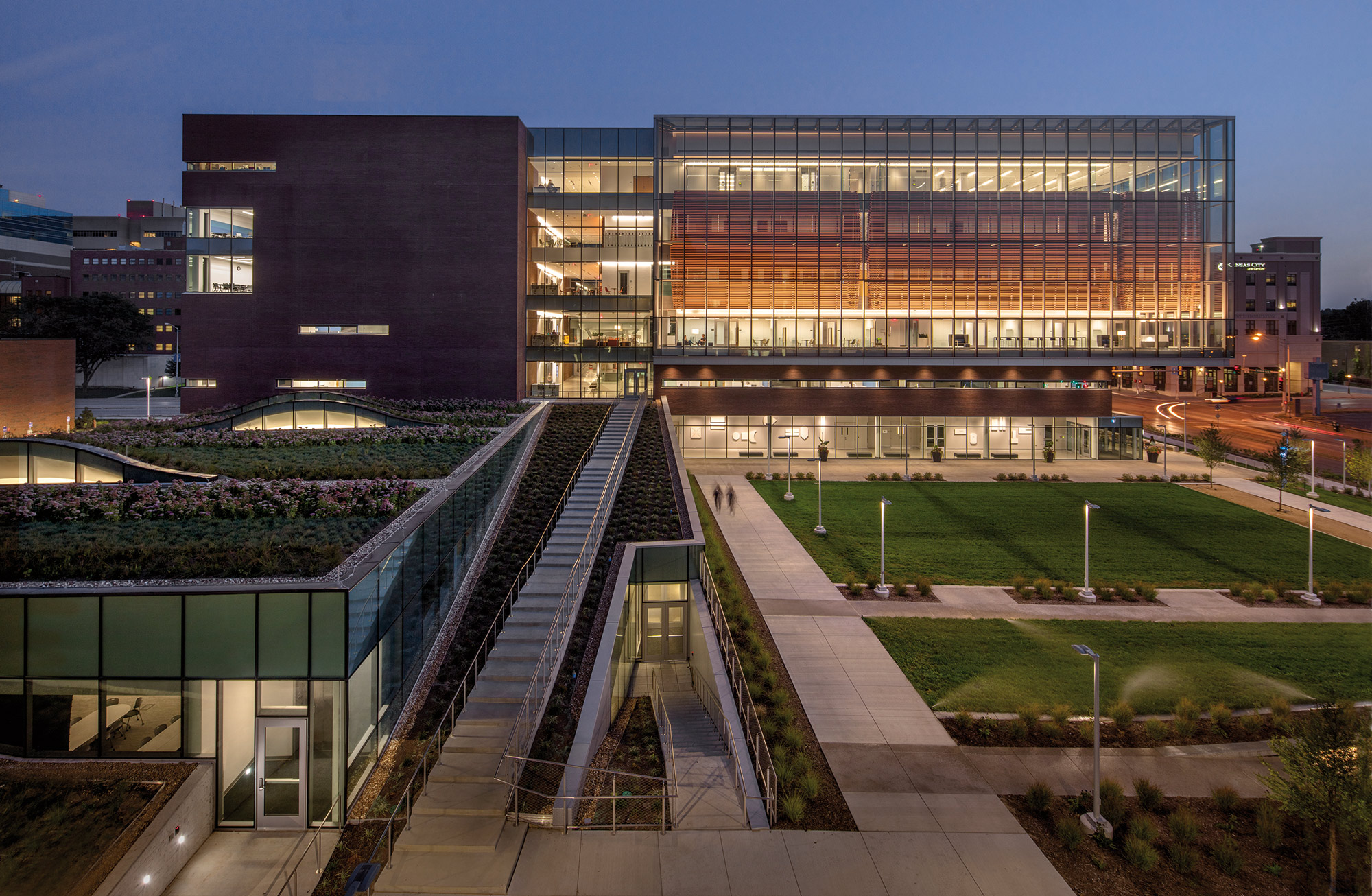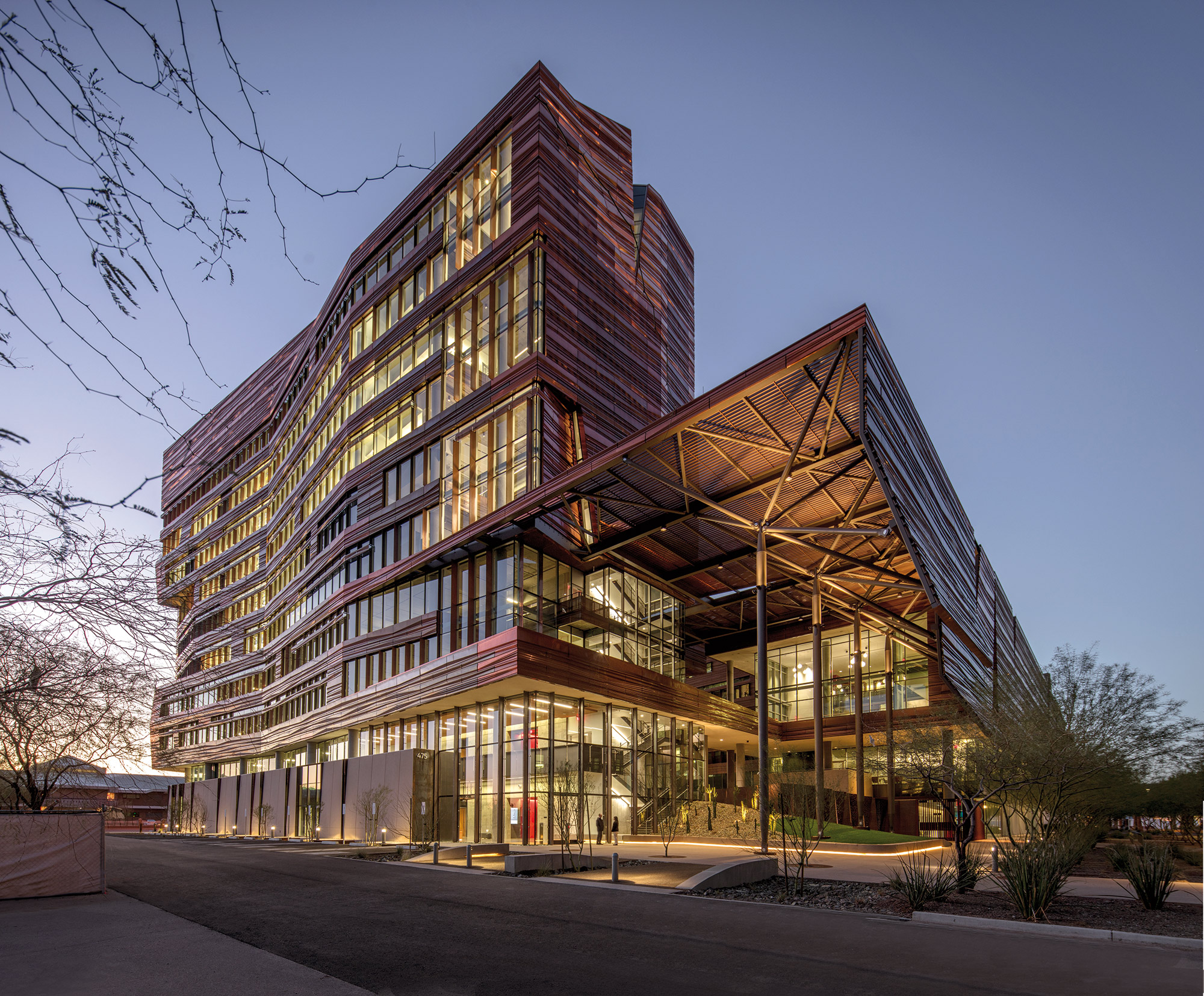The Shape of Labs: The University of Arizona Biomedical Sciences Partnership Building
By Andrew Labov and Jennifer Swedell
Contemporary research engages teams of researchers working together to solve complex problems. Today’s laboratory facilities bring different scientific disciplines under one roof to create opportunities for collaboration and cross-disciplinary discovery. Yet physical laboratory space requirements often vary greatly among the disciplines, resulting in unique challenges in laboratory planning and programming.
The Biomedical Sciences Partnership Building (BSPB) at the University of Arizona (UA) is a new, 10-story, 245,000-sq.-ft. research laboratory supporting the UA School of Medicine-Phoenix. This project was particularly challenging: while the UA had initially defined the broad research themes for the facility, no researchers were in place at the project outset.
Planning a high-rise, multidisciplinary biomedical research building under these circumstances required a thoughtful approach and creative solutions. Knowing only that the BSPB would focus on cancer biology, neuroscience, traumatic brain injury, bioengineering, and population health, the CO Architects laboratory planning team went to work.
Here are some of the strategies and solutions the team developed to address the planning challenges.
Programming Tool Kit
CO developed a programming tool kit for research facilities that helped the UA leadership quickly define the vision of the project and from their statement of broad research themes, its programmatic needs, functional requirements and cost. A series of interactive tools and exercises were used to build the program without knowing the actual users.

Program Distribution Strategy
The results of the programming tool-kit exercises suggested a proportional range of laboratory types distributed vertically throughout the BSPB’s 10 stories.
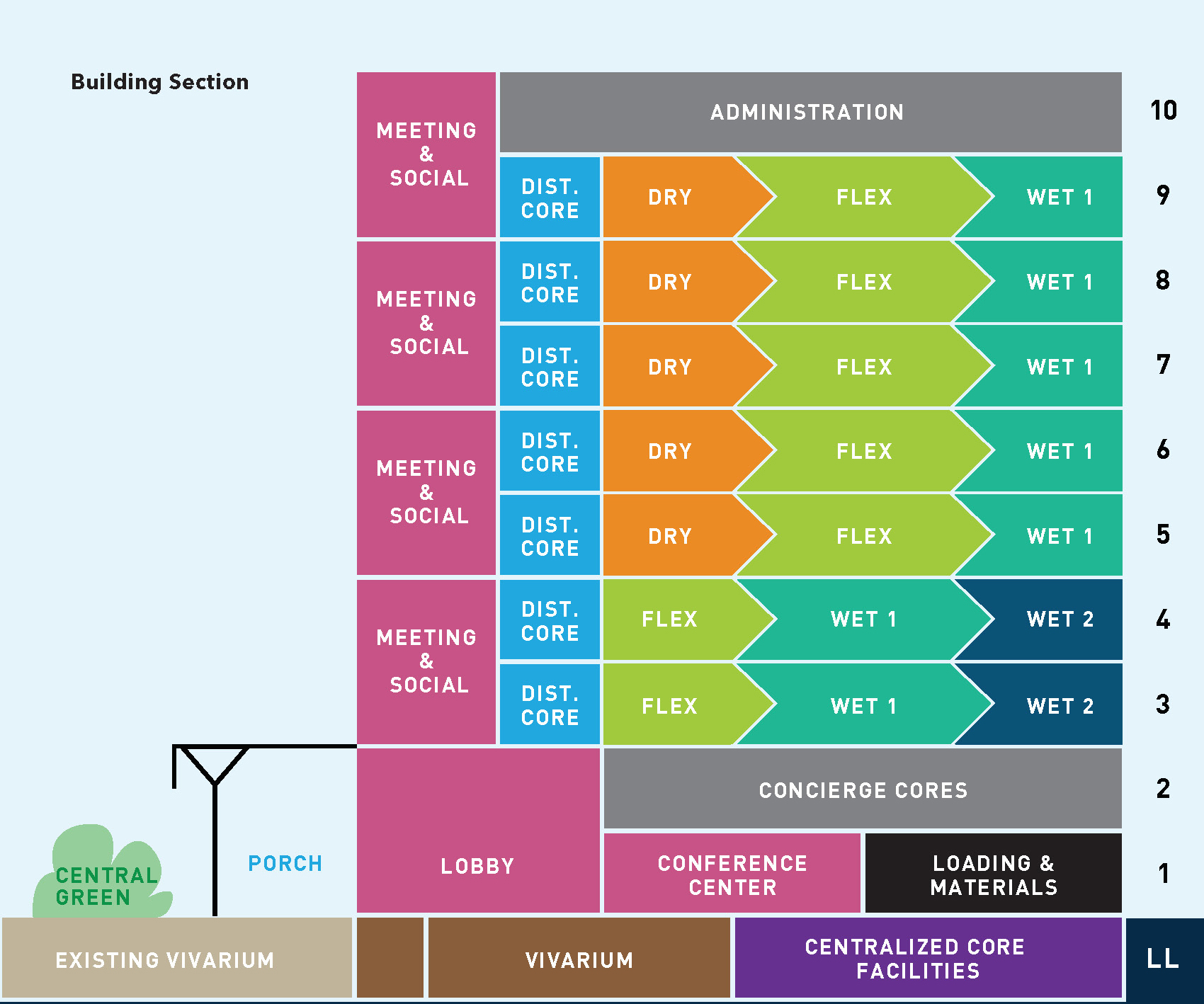
New Workflow Paradigm
The proliferation of specialized research instruments that collect large volumes of data has changed the nature of the laboratory bench and the workflow within the BSPB.
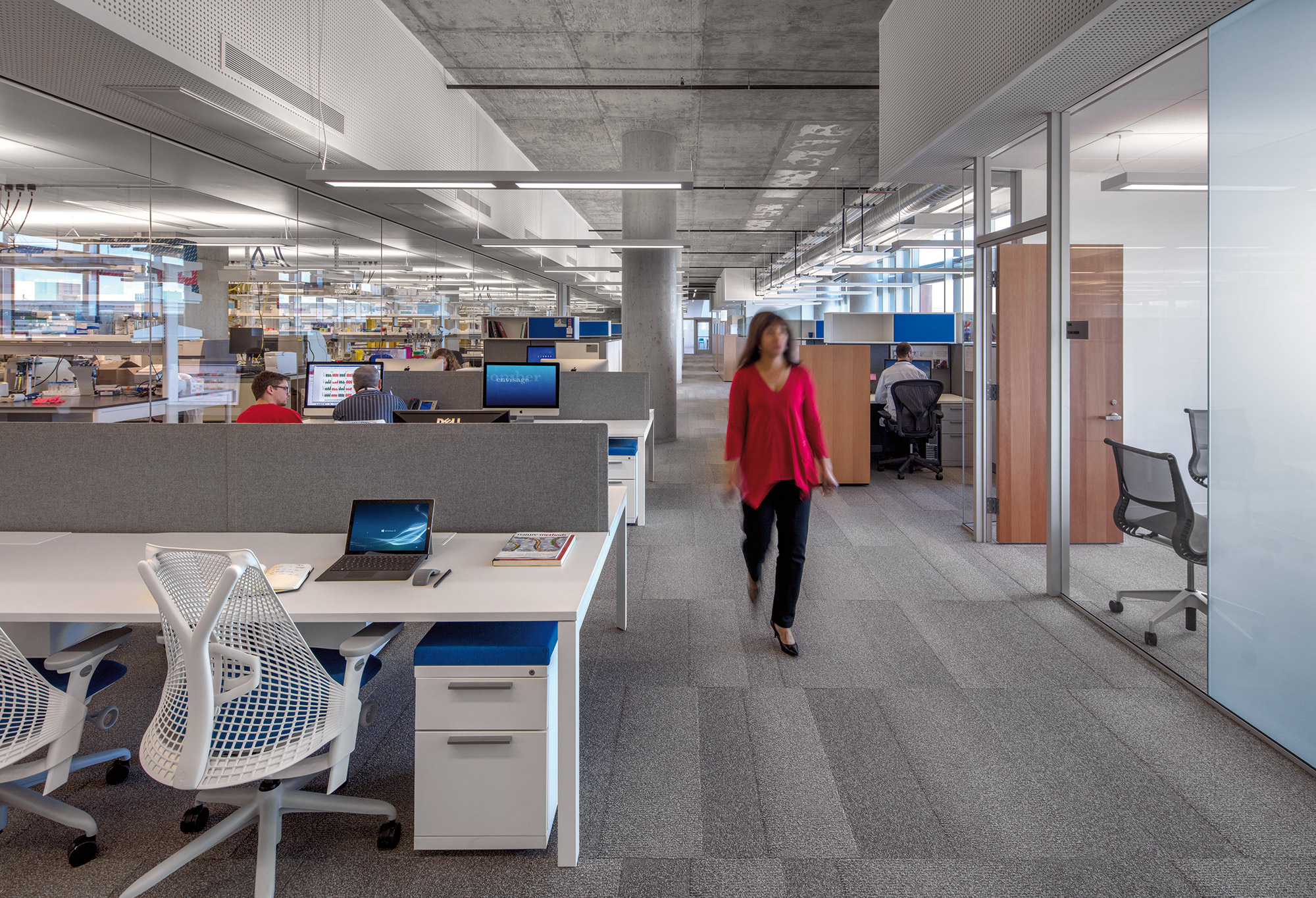
Typical Research Floor:
Research floors are zoned for various activities and arranged to maximize operational workflow and collaboration.
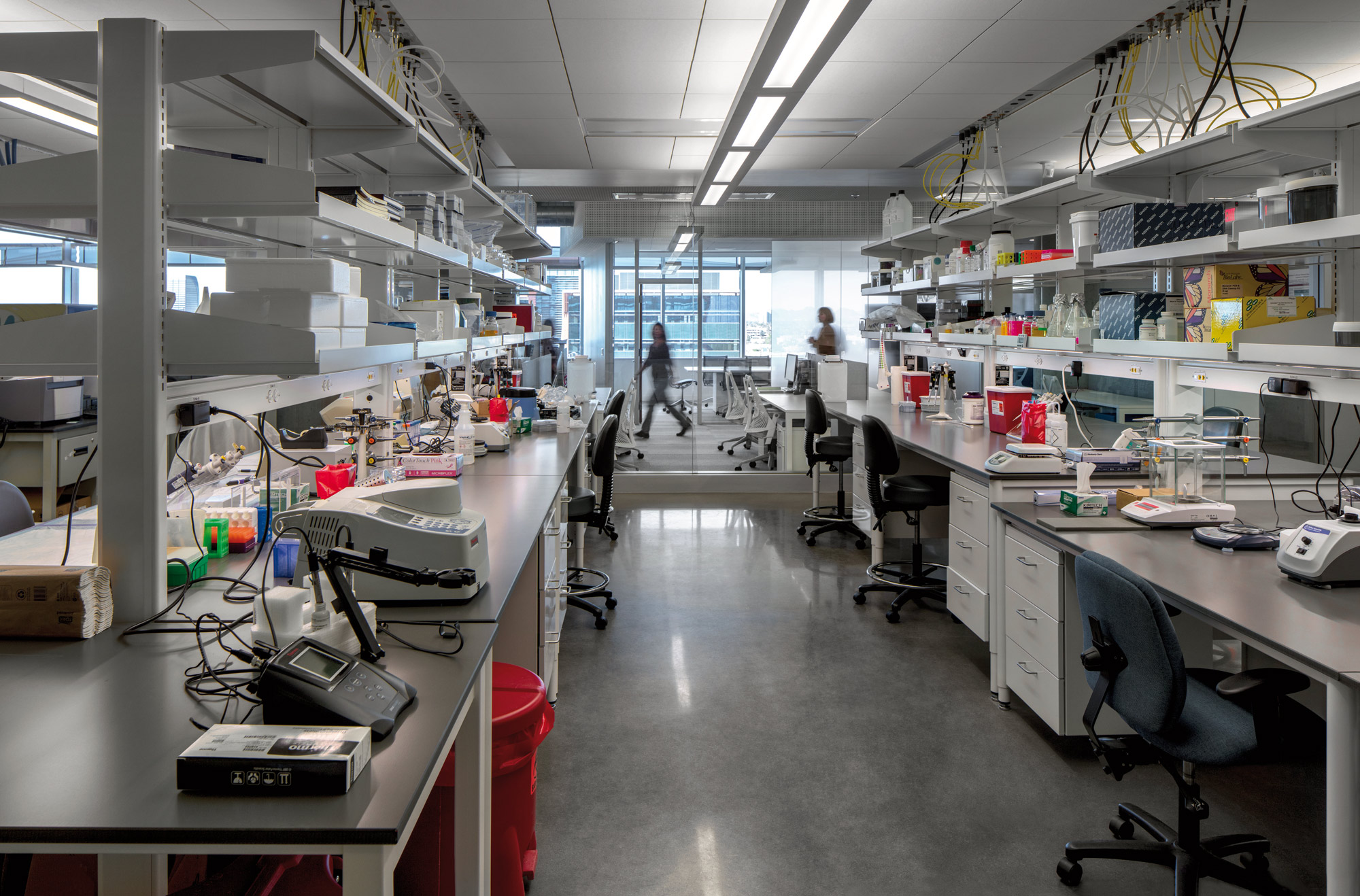

Completed in 2017, the Biomedical Sciences Partnership Building represents the vision, mission and aspirations of the University of Arizona and the UA School of Medicine-Phoenix. The modern, flexible facility successfully unites teams of researchers working together to improve healthcare across Arizona, the US and the world.
